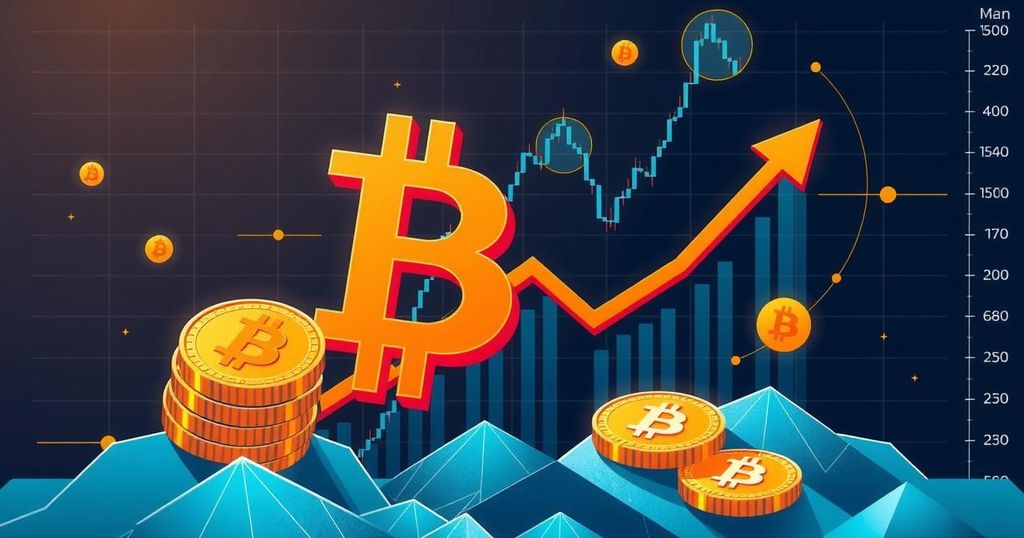Understanding Bitcoin Halving Cycles and Their Market Impacts
Bitcoin halving cycles occur approximately every four years, cutting the mining reward in half and impacting supply and price. Historical trends indicate a price increase following each halving event, though volatility can arise immediately thereafter. The next halving is projected for March 26, 2028, prompting investors to consider strategies to effectively participate and capitalize on market movements while being aware of the associated risks.
Bitcoin’s halving cycles play a crucial role in determining the cryptocurrency’s market price. These events happen approximately every four years and reduce the reward for mining new Bitcoin blocks by half. Consequently, halving increases scarcity in the Bitcoin supply, theoretically enhancing its value over time. Historically, Bitcoin price has seen significant appreciation following these halving events, although initial volatility and market corrections often accompany them. The next halving is anticipated for March 26, 2028, leading investors to reflect on both the risks and rewards of participating in this event. Understanding past cycles and being prepared for potential market reactions can be instrumental for both seasoned traders and newcomers to navigate the complexities of Bitcoin investing efficiently.
Bitcoin halving events, occurring every four years or every 210,000 blocks mined, are significant milestones in the cryptocurrency marketplace. During these events, the reward for Bitcoin miners is halved, impacting supply dynamics and market value. Recognized for creating increased scarcity, halving events historically lead to price hikes, fostering speculation and investment interest. As the next halving approaches in 2028, analysts and investors are looking closely at historical trends while considering market fluctuations, adoption rates, and broader economic factors that influence Bitcoin’s price trajectory. These cycles are intertwined with the incentives for miners and the opportunity for investors to capitalize on potential price increases.
In conclusion, Bitcoin halving cycles are pivotal in shaping the cryptocurrency’s market landscape. With a structural reduction in new Bitcoin supply, the event creates a breeding ground for speculation, market volatility, and potential price appreciation. As the upcoming halving on March 26, 2028, draws closer, it is essential for investors to analyze previous cycles and understand the inherent risks and opportunities. Informed decision-making will be crucial to capitalize on potential gains and navigate the increasingly intricate world of Bitcoin trading successfully.
Original Source: www.globalbankingandfinance.com




Post Comment